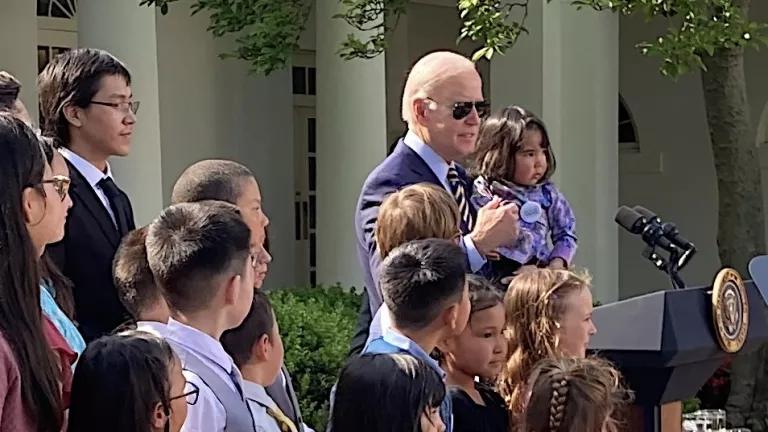The Onshore Drilling Threat to Florida: Oil Exploration in the Everglades

Even if the Trump administration removes Florida from its proposal for offshore drilling, the state faces a significant threat onshore: in the Everglades.
Last year, the fossil fuel industry targeted the Big Cypress National Preserve in the western Everglades for oil development. The Preserve yields more than 40 percent of the water flowing into Everglades National Park and is a vast hydrologic network—among the least altered remaining in south Florida—at least for now. The preserve is also home to several federally listed species recognized under the Endangered Species Act, including the critically endangered Florida panther.
The politically powerful Collier family, after whom a Florida county was named, owns oil beneath the preserve. While discrete portions of Big Cypress have been developed for oil, the Colliers are targeting new areas for exploration. The Colliers leased their mineral rights to the Texas-based Burnett Oil Company, which began the first of four planned phases of new seismic oil exploration in 2017.
Burnett Oil’s four-phased seismic survey will ultimately impact 230,000 acres, or one-third, of Big Cypress. The size, magnitude, and survey technology of this seismic survey is unprecedented in Florida.
2017 Seismic Survey Activities to Explore for Oil and Gas in the Big Cypress National Preserve
Click on the black dots to view images of seismic activity
Photograph locations obtained from the National Park Service
Burnett Oil already sent 33-ton “vibroseis” trucks and other off-road vehicles into sensitive wetlands, recreational areas, and endangered species’ habitats, to look for oil in 2017. The seismic exploration caused visible damage to soils and vegetation due to the size and weight of the vibroseis trucks, which repeatedly got stuck in wetlands. Cypress and other trees were cut, run over, and harmed to make way for the 12-foot wide trucks.
Video obtained from the National Park Service showing “vibroseis” vehicles operating in the Big Cypress National Preserve
Video obtained from the National Park Service showing “vibroseis” vehicles operating in the Big Cypress National Preserve
Video obtained from the National Park Service showing “vibroseis” vehicles operating in the Big Cypress National Preserve
The oil company also staged equipment and vehicles in wetlands in the Preserve without underlying mats to protect soils from disturbance or compaction, despite its commitment to move staging areas to an upland location outside of the Preserve. Although the National Park Service restricted seismic survey operations to “dry season conditions,” the oil company failed to finish Phase I with sufficient time to remove its equipment before the heavy rains began. As oil company workers drove the vibroseis trucks through standing water, hydraulic fluid leaked into wetlands. The company also left trash, debris, and portable toilets behind in standing water.
Burnett Oil was supposed to restore the soil impacts concurrently with seismic survey operations and treat the wounded trees. It failed on both accounts. It then applied for a state permit to continue seismic survey activities in 2018, without regard to the damage it caused.
NRDC and its partners stepped in to inform state regulators of the damage and obtained a revised permit requiring the oil company to restore the existing damage and imposing more protective conditions, including specific operation, restoration, and long-term monitoring requirements.
The damage to the Everglades is not worth the cost of extracting the oil
Oil is not a major industry in the state of Florida – its oil production peaked in 1978, and has been on the decline ever since.

Florida ranks only 30th out of 50 states in total energy production. In March 2016, it produced only about 6,000 barrels per day (b/d) of crude oil. Texas produced 3.2 million b/d in the same month.
An oil formation known as the Sunniland oil trend spreads over the southwest Everglades. The variety of oil produced here is “heavy sour,” which, when refined, produces fuel for cars and airplanes, diesel fuel, lube oils, and asphalt. As crude oil prices lifted in the mid-to-late 2000s, new horizontal drilling and hydraulic fracturing and acidizing technologies prompted renewed interest in the area. But Florida’s geology is not amenable to these practices. Its oil is found in porous limestone formations, which also happen to house aquifers used for drinking water. Local citizens fear that if more oil and gas resources are identified in Big Cypress, the fossil fuel industry will want to drill and frack there. This is concerning because there are at least three aquifers beneath the Preserve.
Further oil and gas development in Big Cypress will threaten Florida’s natural resources and scenic beauty, which are far more important to the state and local economies than fossil fuels. Florida hosted a record-breaking 105 million visitors in 2015. Tourism is Florida’s largest economic driver, accounting for nearly 1.2 million jobs in tourism-related employment and over $89 billion in tourism spending. Tourism includes fishing, hunting, paddling, hiking, birding, and wildlife viewing in natural areas like Big Cypress. At the same time, billions of dollars are being spent to restore the Everglades. Turning Big Cypress into an industrial zone is not compatible with Everglades restoration. Why risk contaminating a national preserve that feeds the Everglades with clean water and recharges local drinking water supplies?
The answer is as clear as the water in the aquifers located beneath the Everglades. Fossil fuel development poses unacceptable risks to drinking water supplies, endangered species, and tourism and taxpayer dollars. It’s simply not worth the high environmental price of extracting small amounts of crude oil—all for the benefit of one wealthy family and a Texas-based oil company, at the public’s expense.



